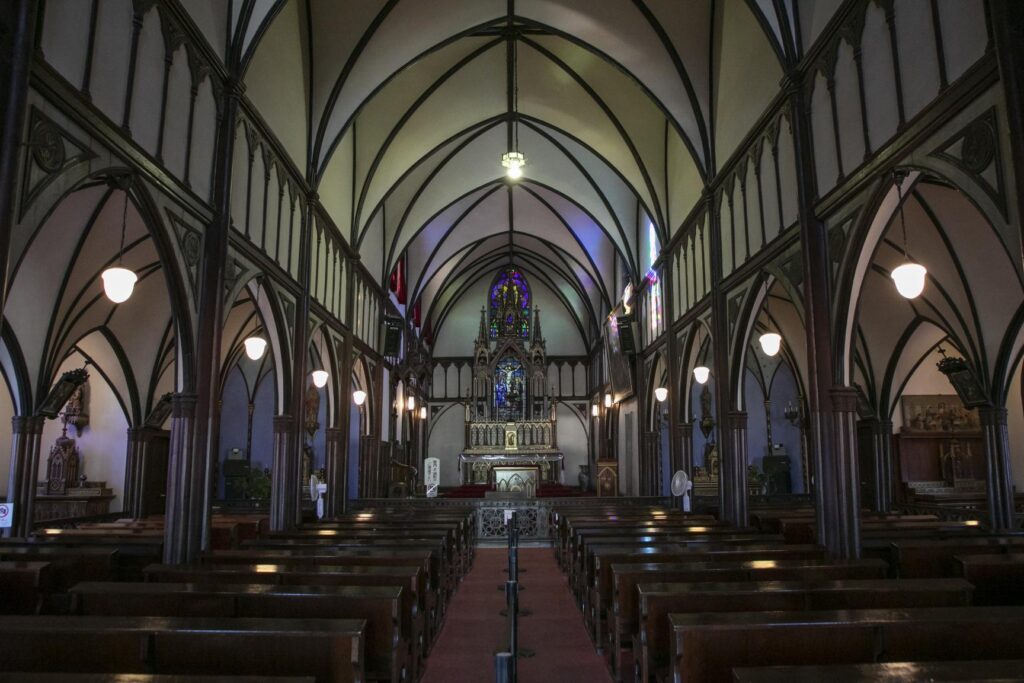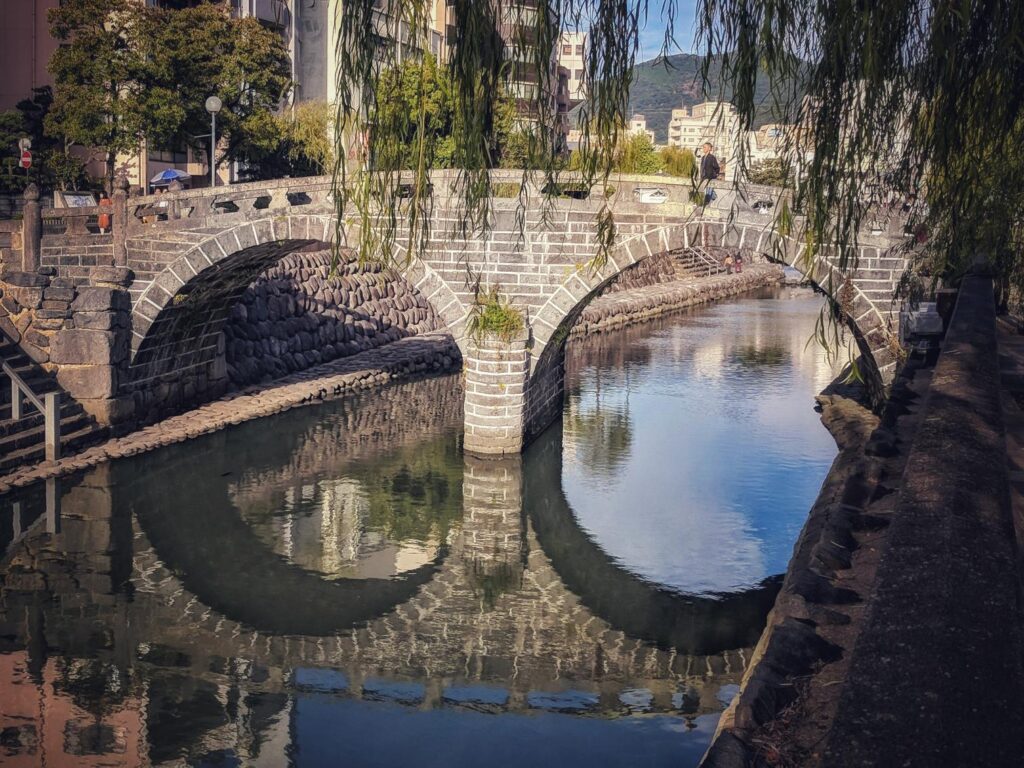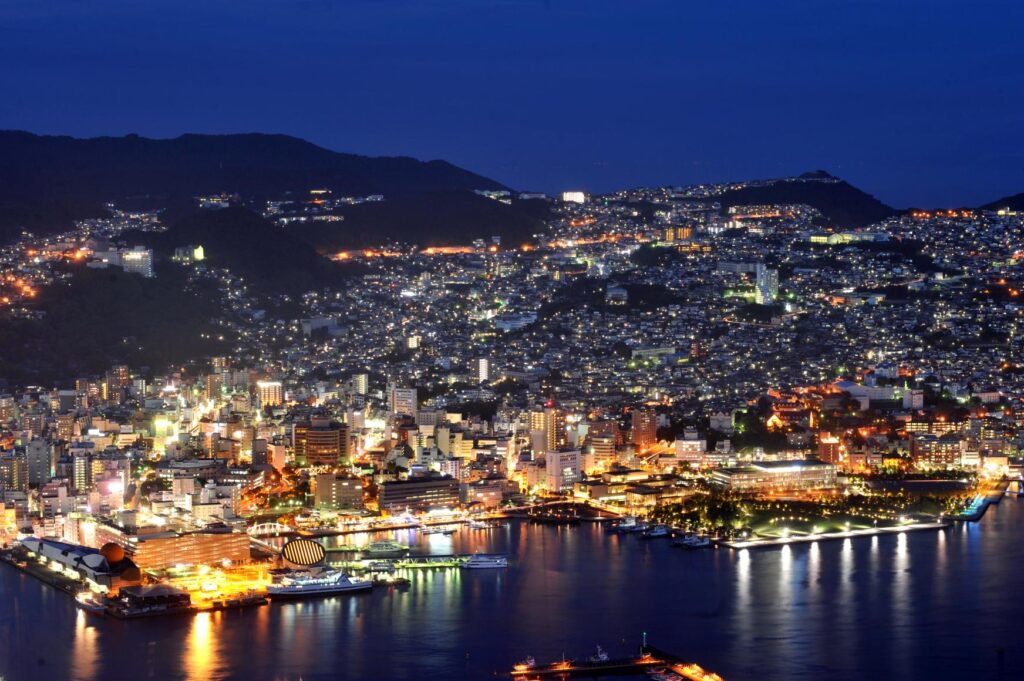NAGASAKI
Atomic Bomb Museum


This museum introduces the devastation of the atomic bombing, the process that led to the dropping of the bomb, and the history of nuclear weapons development. The museum also introduces the reconstruction of Nagasaki from the bombing to the present, with narrative exhibits, and promotes peace toward the realization of a world without nuclear weapons.
Comparing photographs of Nagasaki immediately after the atomic bombing and today, one can clearly see the city of Nagasaki that has been rebuilt at a remarkable pace and the resilience of its citizens.
Peace Park


Peace Park, located on a small hill on the north side of the Atomic Bomb Drop Center Park, was created with a pledge never to repeat the tragic war and a wish for lasting world peace.
The Peace Statue symbolizes the wish for peace of the citizens of Nagasaki. The statue, created by a sculptor from Nagasaki, symbolizes the love of God and the mercy of Buddha, with the right hand pointing to the heavens to symbolize the “threat of the atomic bomb,” the horizontally outstretched left hand symbolizing “peace,” and the lightly closed eyelids symbolizing the “peace of the victims of the atomic bomb. The lightly closed eyelids represent a prayer for the repose of the souls of the victims of the atomic bombing.
Glover Garden


Located on Minami Yamate Hill overlooking the panoramic view of Nagasaki Port, it is one of the most popular tourist spots in Nagasaki with an exotic atmosphere.
Six Western-style buildings from the Meiji period scattered throughout the city have been relocated and restored, with the former Glover Residence, the former Ringer Residence, and the former Alt Residence as the main buildings, which are designated as National Important Cultural Properties. The stone pavement and stone steps, which retain the appearance of the settlement period, further enhance the fragrance of history and culture. The park is decorated with flowers, making it a picturesque place no matter where you take a picture.
Oura Church


Built in the Nagasaki Settlement after the opening of the country to the outside world at the end of the Edo period, it is known as the oldest surviving church in Japan. It stands facing Minamiyamate Glover Street and is a Gothic style church with beautiful stained glass windows.
In March of the following year after its completion at the end of 1864, a Christian hiding in Urakami visited the church and confessed his faith, making it the scene of a “discovery of the faithful” unprecedented in the history of world religions. The church is dedicated to the 26 Japanese saints who were martyred just before its construction, and the front of the Church is built toward Nishizaka, the site of their martyrdom.
Megane Bridge


The Megane-bashi Bridge is said to have been built in 1634 by Zen monk Mokuzu Nyosei of Kofuku-ji Temple. It is said to have been so named because the shadows on the surface of the river form twin circles and look like “glasses”.
The bridge partially collapsed during the Great Nagasaki Flood of 1982, but was restored the following year and is designated as a National Important Cultural Property.
Dejima


Dejima, a man-made island built by order of the Tokugawa Shogunate, was completed in 1636.
For nearly 200 years, Dejima played a major role in the modernization of Japan as the country’s only window to the West. In the Meiji period (1868-1912), the area around Dejima was reclaimed and its original fan-shaped shape floating on the sea disappeared. The city of Nagasaki began restoring Dejima in 1951, and to date, 16 buildings and landscapes have been restored to their original appearance.
Mt. Inasa


It is a landmark of Nagasaki City and a popular photogenic spot crowded with people viewing the night view.
Centered on Nagasaki Port, known as the “Port of Cranes,” the area is surrounded by mountains, creating a unique three-dimensional nightscape with its mortar-shaped topography, and is known as the “$10 Million Nightscape. In recognition of its beauty, Nagasaki was selected as one of the “World’s New Three Greatest Nightscapes” along with Monaco and Shanghai at the “World Nightscape Summit in Nagasaki” in 2021. Nagasaki City, including Mt. Inasa, was also re-certified as one of the “New Three Greatest Night Views of Japan” at the “Night View Summit 2022 in Sapporo”.
Memorial Hall of the 26 Saints of Japan


On February 5, 1597, Toyotomi Hideyoshi’s prohibition of Christianity led to the execution of 26 Christians for the first time in Japan. This museum was built in 1962 on Nishizaka Hill, the site of their martyrdom, to commemorate the 100th anniversary of the canonization of the 26 Japanese saints, and is an official pilgrimage site for Catholics, known worldwide.
The monument with life-size bronze statues of the 26 saints is the work of sculptor Yasutake Funakoshi.
Megami Ohashi Bridge


The Venus Wing of the Goddess of Mercy Bridge connects the southern and western parts of Nagasaki City, which are separated by the Port of Nagasaki, over the shortest distance. It is the sixth longest cable-stayed bridge in Japan, with towers and girders supported by diagonally stretched cables, and has a height of 65 m below the girders to allow large ships to pass through.
The bridge is illuminated at night, and together with Hong Kong and Monaco, it has become a symbol of the “New World’s Three Greatest Night Views. Normally, the lighting is based on white, but during events, it is colorfully illuminated. The beauty of the nightscape has been recognized as a “Nightscape Heritage of Japan (Light-up Nightscape Heritage).
